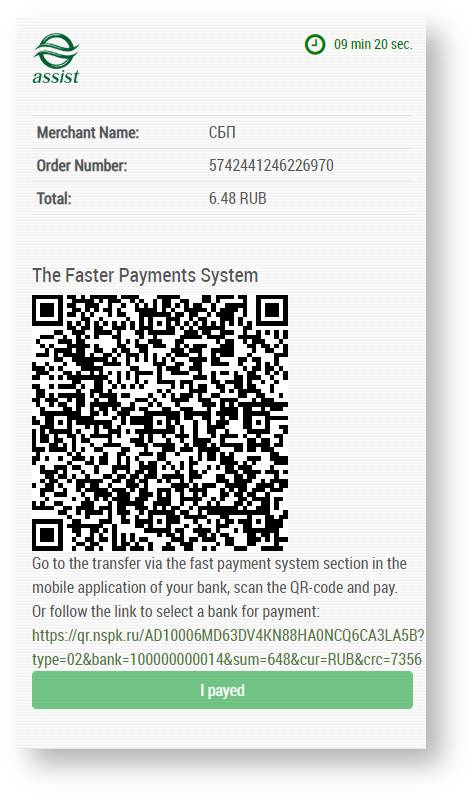Page History
...
- The customer selects the product or service on the store’s website and proceeds to pay for the order.
- The store redirects the customer to the Assist payment page.
- On the Assist payment page, the customer selects the faster payment system as a payment means.
- Assist registers the payment in the service of the partner bank and receives data for generating a QR code.
- Assist displays a generated QR code on the payment page, which the customer can scan using the bank's mobile application and confirm the payment.
- If for some reason it was not possible to generate a QR code, then a corresponding message appears with a suggestion to try again.
If the QR code is displayed on the customer's mobile device, where he has the bank application, then the URI link (the contents of the QR code) is also displayed under it. Clicking on this link calls up the bank application through the Intent mechanism. Bank applications must be registered in the system to process such links, and if there are several such applications on the device, a choice will be offered. After selecting an application in it (or immediately in a single bank application installed on a mobile device), the payment process by faster payment system starts (after user authentication) based on data from the QR code
When a customer uses mobile payment pages, then a list of banks is displayed to select payment via FPS (instead of a QR code); after selecting a bank, an automatic transition to the application of this bank on the customer’s smartphone is carried out. - Assist receives a notification of payment from a partner bank.
- Assist displays the payment result for the customer or redirects the customer to the store website (depending on the merchant settings).
...



